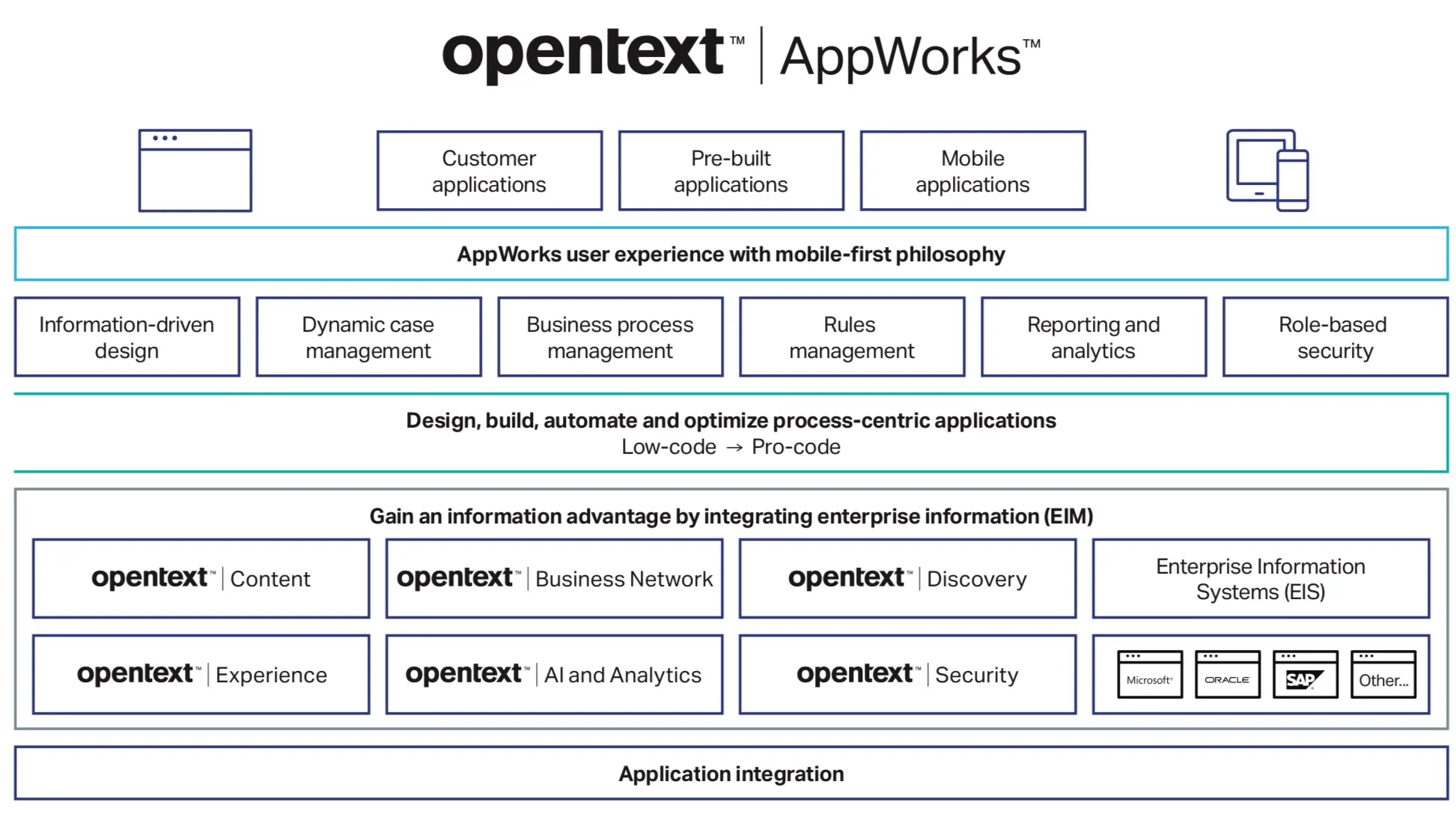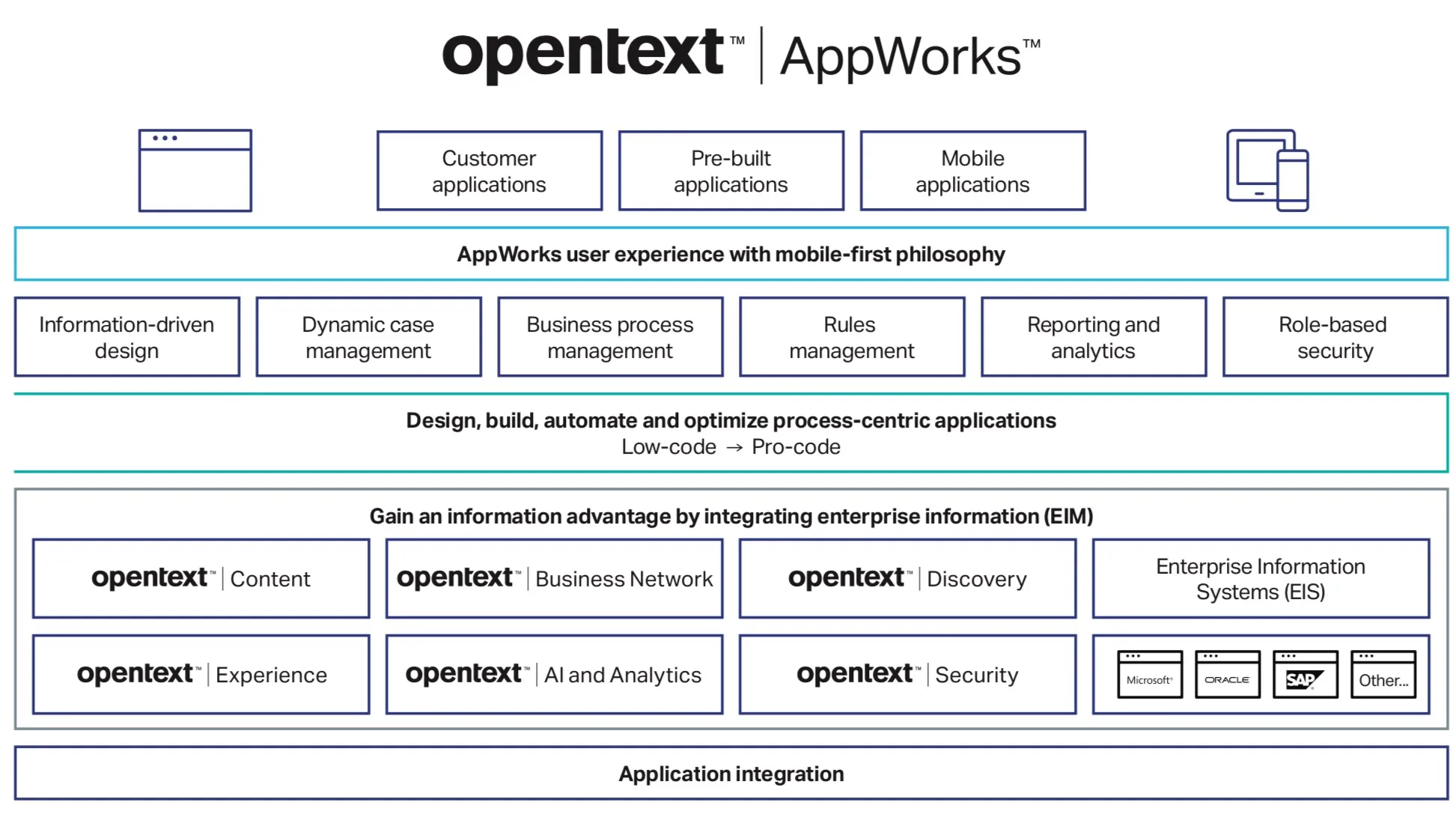OpenText Enterprise World 2019: AppWorks roadmap and technical deep dive
Blog: Column 2 - Sandy Kemsley
I had an afternoon with AppWorks at OpenText Enterprise World: a roadmap session followed by a technical deep dive. AppWorks is their low-code tool that includes process management, case management, and access to content and other information, supported across mobile and desktop and platforms. It contains a number of pre-packaged components, and a technical developer can create new components that can be accessed as services from the AppWorks environment. They’ve recently made it into the top-right corner of the Forrester Wave for [deep] digital process automation platforms, with their strength in case management and content integration listed as some of their strongest features, as well as Magellan’s AI and analytics, and the OpenText Cloud deployment platform.

The current release has focused on improving end-user flexibility and developer ease-of-use, but also on integration capabilities with the large portfolio of other OpenText tools and products. Some new developer features such as an expression editor and a mobile-first design paradigm, plus an upcoming framework for end-user UI customization in terms of themes and custom forms. Runtime performance has been improved by making applications into true single-page applications.
There are four applications built on the current on-premise AppWorks: Core for Legal, Core for Quality Management, Contract Center and People Center. These are all some combination of content (from the different content services platforms available) plus case or process management, customized for a vertical application. I didn’t hear a commitment to migrate these to the cloud, but there’s no reason that this won’t happen.
Some interesting future plans, such as how AppWorks will be used as a low-code development tool for OT2 applications. They have a containerized version of AppWorks available as a developer preview as a stepping stone to next year’s cloud edition. There was a mention of RPA although not a clear direction at present: they can integrate with third-party RPA tools now and may be mulling over whether to build/buy their own capability. There’s also the potential to build process intelligence/mining and reporting functionality based on their Magellan machine learning and analytics. There were a lot of questions from the audience, such as whether they will be supporting GitHub for source code control (probably but not yet scheduled) and better REST support.
Nick King, the director of product management for AppWorks, took us through a technical session that was primarily an extended live demonstration of creating a complex application in AppWorks. Although the initial part of creating the layout and forms is pretty accessible to non-technical people, the creation of BPMN diagrams, web service integration, and case lifecycle workflows are clearly much more technical; even the use of expressions in the forms definition is starting to get pretty technical. Also, based on the naming of components visible at various points, there is still a lot of the legacy Cordys infrastructure under the covers of AppWorks; I can’t believe it’s been 12 years since I first saw Cordys (and thought it was pretty cool).
There are a lot of nice things that just happen without configuration, much less coding, such as the linkages between components within a UI layout. Basically, if an application contains a number of different building blocks such as properties, forms and lifecycle workflows, those components are automatically wired together when assembled on a single page layout. Navigation breadcrumbs and action buttons are generated automatically, and changes in one component can cause updates to other components without a screen refresh.
OpenText, like every other low-code application development vendor, will likely continue to struggle with the issues of what a non-technical business analyst versus a technical developer does within a low-code environment. As a JAVA developer at one of my enterprise clients said recently upon seeing a low-code environment, “That’s nice…but we’ll never use it.” I hope that they’re wrong, but fear that they’re right. To address that, it is possible to use the AppWorks environment to write “pro-code” (technical lower-level code) to create services that could be added to a low-code application, or to create an app with a completely different look and feel than is possible using AppWorks low-code. If you were going to do a full-on BPMN process model, or make calls to Magellan for sentiment analysis, it would be more of a pro-code application.
